In this article, an explanation of the difference between pumps and turbines, two widely used water machines in the industry will be given. First, an explanation of the features, structure, and history of each will be provided and then compared.
A Pump takes in usable energy, turns it into kinetic energy, and then transfers it to a fluid stream. The Turbine, on the other hand, absorbs energy from a fluid flow and converts it to work. A turbine reduces the energy of the fluid stream, whereas a pump increases it. Pump and Turbine are important products to use in industrial applications. Pump and Turbine are provided by several Suppliers and Companies, different manufacturers, and a lot of distributors and there are a lot of Pumps and Turbines for sale on Linquip.
On the Linquip website, there is a comprehensive list of Pump and Turbine services that cover all your requirements. Linquip can link you with a variety of industrial Pump and Turbine service providers and specialists to assist you. Linquip has a list of Pump and Turbine Experts and subject matter experts who can assist you with testing your equipment.
Both pumps and turbines have been invented and developed to exchange energy with water. The main difference between pumps and turbines is the path of energy transfer between the fluid and the machine which will be described in detail below.
Pump
A pump is a turbomachine used to transfer liquids from one point to another. For this purpose, pumps use mechanical energy. The pump works on the liquid to increase its energy to a higher energy level or entropy, and consequently its pressure.
Most pumps work on the basis of a rotational motion. However, some pumps have also been developed that operate by linearly moving their components, increasing liquid energy. The source of energy for pumps is usually a fuel engine or an electrical motor.
The important point about the pump is that this machine is not a means of converting the form of energy, but directs the energy in a predetermined direction. Of course, no pump has 100% efficiency, because a portion of the energy is lost due to vibrations, noise and heat.
Water naturally flows downwards due to gravity. So humans need to use a mechanism that rises water from lower levels to be utilized for everyday life, washing, hygiene, food preparation, or special uses such as agriculture, animal husbandry, and industrial application.
The first signs of the invention of the pump appear to have belonged to the Egyptians around 2000 BC. The name of this tool is Shadoof, a cup tied to rods and ropes to draw water from deep wells.
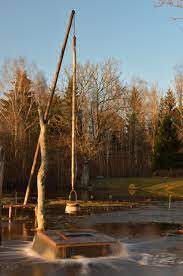
Between three hundred and one hundred years BC, the ancient Greeks made significant advances in pumping.
The invention of the water wheel occurred during this period and was used for irrigation.
Archimedes also invented the screw pump at this time. This video shows how these turbines work well.
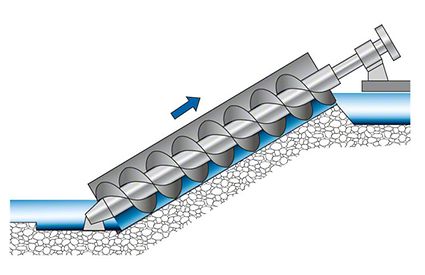
A power pump was also invented in Egypt during this era. The pump operated manually, using a cylinder and piston system to draw water.
For several centuries, pump technology did not advance and pumping systems of the past continued to be used until the Enlightenment. However, since about 500 years ago, the study of water machines was again considered, which led to the emergence and development of modern pumps.
For example, in the 16th century, a gear pump was invented to pump the liquid with a system of gears. Centrifugal and savery pumps were developed during the 17th and 18th centuries, respectively. Also, Axial Flow Pump, Jet Pump, and Electromagnetic Pumps are among the pumps that were introduced to the industry during the 20th century.
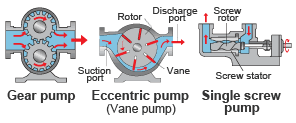
For different situations and cases, the specific pump designed for that flow conditions should be used.
The amount of liquid being pumped, the fluid pressure at the destination, the flow characteristics including the number of gases and solid particles in the flow and the type of erosion and corrosion effects on the pumping system components along with fluid characteristics such as viscosity, temperature, and density are among the criteria should be considered.
The efficiency of Pump
The relation for calculating the efficiency of a pump is as follows:
{\eta}=\frac{{\rho}gQH}{P}
In this relation, ρ, g, Q, and H are water density, gravitational constant, mass flow rate, and head, respectively. Also, P is the power given to the pump to operate.
Pump Specific Speed
The dimensionless specific speed of a pump is calculated by the equation below:
N_{s}=\frac{NQ^{0.5}}{(gH)^{0.75}}
N represents the rotational speed of the pump in rpm.
Turbine
Turbines are water machines that absorb energy from the flow of water and convert it into mechanical work. By connecting an electric generator to the shaft of a turbine, mechanical work is converted into electrical energy.
The shaft is the rod along the central axis of the turbine that rotates around itself with the blades attached to it. The blades of a turbine are usually shaped like fan blades. Of course, in some cases, they are in the form of buckets. The geometry of the turbines is designed so that the liquid can apply the rotation of the rotor in the same direction as the force applied to the blades.
As mentioned, the turbine rotational motion can generate energy by connecting to a dynamo. Other applications include connecting the turbine shaft to the pump to direct water from a lower position to an upper reservoir.
Like a pump, a portion of the power generated by a turbine is lost in the form of noise, vibration, or heat. So the efficiency of any turbine is not 100%.
The oldest turbines are windmills and water wheels. In the figure below, one of the ways of positioning a water wheel across the flow stream is shown. For further information, please check out this link.
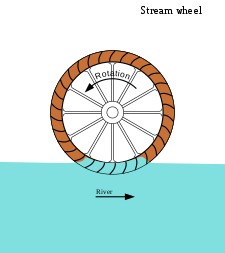
Historians date the use of water wheels to 202 BC and 9 AD in China. Contemporary uses of water power in industry coincide with the Industrial Revolution, such as the spinning mill set up in England in 1771 by Richard Arkwright.
The turning points in the development of water turbines occurred in the 19th and 20th centuries. The Francis, Pelton, and Kaplan turbines were invented in 1849, 1880, and 1913, respectively, as three of the most widely used turbines in the world today.
What turbine engineers use in a given situation depends on several factors. Including power required for production, geographical location, available water volume, available river or dam characteristics, waterfall height, and cost factor for operating a hydroelectric system.
The efficiency of Turbine
The relation for calculating the efficiency of a hydraulic turbine is as follows:
{\eta}=\frac{P}{{\rho}gQH}
In this relation, ρ, g, Q, and H represent water density, gravitational constant, mass flow rate, and net hydraulic head, respectively. Also, P is the output power delivered by the water turbine.
Turbine Specific Speed
The specific speed of a pump is calculated by the equation below:
N_{s}=\frac{NP^{0.5}}{(gH)^{1.25}}
N is the turbine rotational speed in rpm.
Difference between Pump and Turbine
Now that a comprehensive description of the pump and turbine, their function, and their earlier examples have been provided, it is possible to outline the difference between pump and turbine.
The difference between pump and turbine includes the following:
Fundamental Differences
The main difference between pump and turbine is the function of the two presented below.
Pump
The pump has been developed to transfer fluid from one point to another with a higher pressure energy level. So, a pump increases the energy of a liquid.
Turbine
The turbine is used to convert the kinetic energy of a fluid with high speed or pressure into mechanical energy for the rotation of the rotor and shaft, and ultimately to generate electrical energy. Hence, the turbine reduces water energy.
The difference in Working Principle
The pump and turbine work in reverse order.
Pump
Pumps move impellers by taking electrical energy from an external source. This movement causes the momentum to transfer to the surrounding fluid and move the fluid.
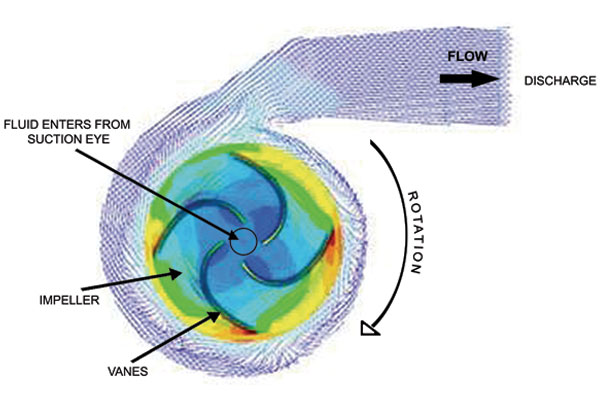
Turbine
Water enters the turbine blades very quickly; the blades start moving with the rotor. The rotor is connected to a shaft which itself is connected to a generator to generate electrical energy.
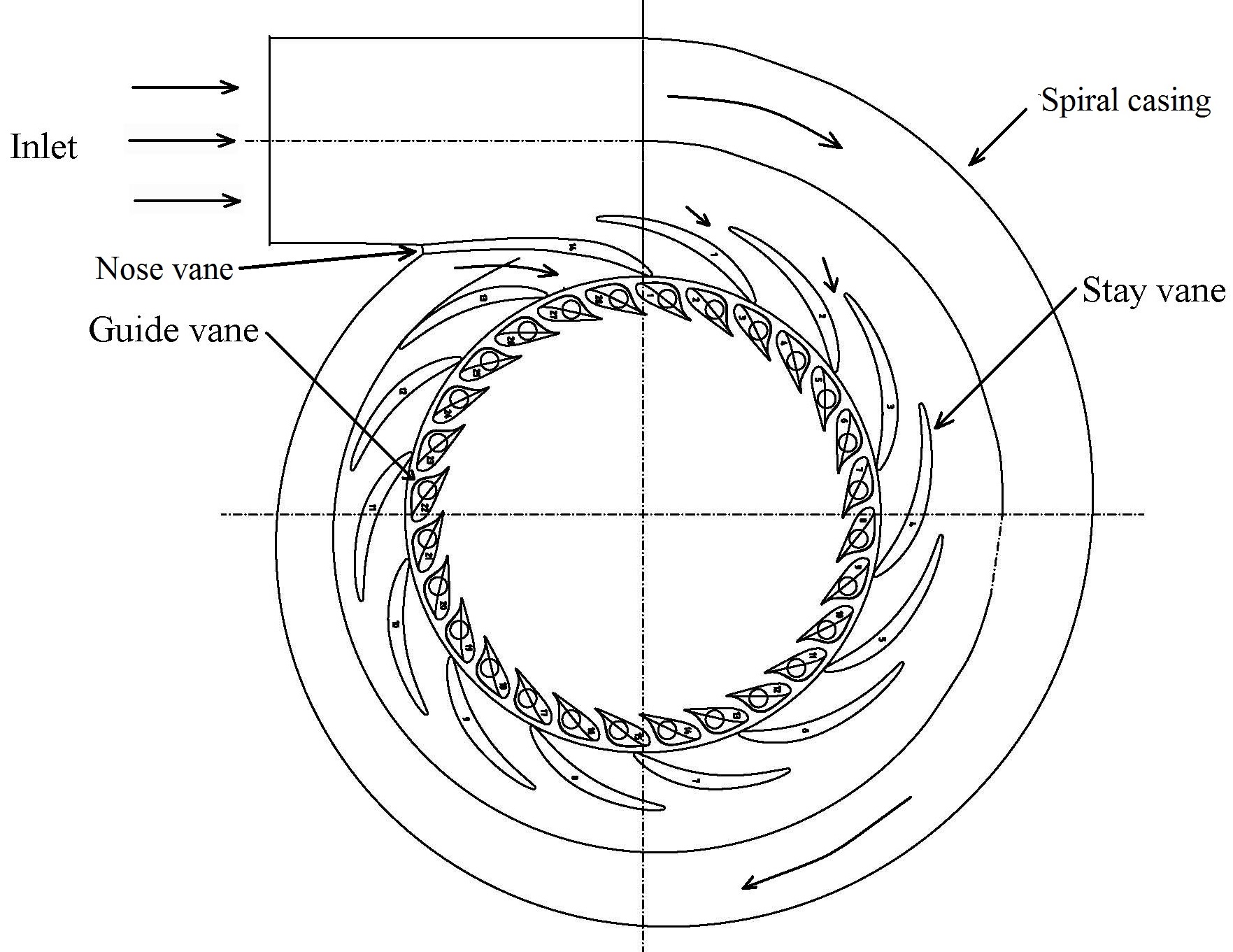
Can A Turbine Act as A Pump?
In the water supply sector, using pumps as turbines is a well-known idea. It is regarded as a cost-effective way of generating power, recovering energy, and contributing to cost savings. Pumps are less difficult to run than turbines, therefore the payback period can be as short as three years. When used as a turbine, the rotor rotates in the opposite direction as when it is used as a pump, or in reverse. It permits the motor to create electrical power in this way.
Differences in Working Conditions
A difference between pump and turbine is the operating conditions.
Pump
Pumps typically operate at the constant head, flow, and rotational speeds. Therefore, the pump is designed for a specific case, which is called the working point. In an ideal situation, the operating point coincides with the maximum pump efficiency.
Due to the constant working conditions, it does not need a device to adjust the current such as a nozzle or guide blade.
Turbine
Conversely, turbines operate with varying head and flow conditions. In a hydraulic turbine, the flow must be adjustable according to the seasonal and occasional variations of the available water flow.
Also, since turbines are commonly used to generate electricity, and in cases where off-grid power plants are used for remote areas, the power output must be commensurate with consumer demand. The guide vanes (in the Francis turbine), the adjustable blades (in the Kaplan turbine), and the system including nozzles and spears (in the Pelton turbine) are responsible to control the flow rate of a water turbine.
Differences in Design
Since the main difference between a pump and a turbine is the inverse of their functions, they must be equipped with related components in the process of transferring the energy.
Pump
Since the task of the pump is to increase the pressure of the liquid, the assembly must be designed in such a way that its components can increase the energy level of the liquid. Therefore, the members of a turbo pump include an inlet (suction pipe), impeller, diffuser, and volute.
Fluid flow enters from the inlet section. It then reaches the impellers that rotate to give mechanical energy to the water and increase the velocity and pressure of the fluid. Next, in the diffuser section, the velocity of the fluid is converted to pressure. The flow reaches the volute, which maintains the velocity of the fluid and directs the flow outward.
A slowed-moving flow is very vulnerable to the phenomena of separation and the formation of vortices. To prevent this, the impeller and volute ducts are composed of smooth, long channels with a cross-sectional area that gradually increases. The passage of fluid through these long ducts is associated with high friction losses.
Turbine
Turbine must be equipped with related components in the process of obtaining fluid energy. Therefore, the components of a water turbine include the rotor, conductor, or flow supply for the turbine (adjustable guide vanes or nozzles), the blades, and the draft tube.
The flow that arrives at the blades mounted on the rotor usually reaches the fixed guide section through a tube called a Penstock, which is responsible for providing the proper speed and angle for the turbine rotating section.
Then, after giving its energy to the blades and providing mechanical energy to rotate the shaft, it reaches the draft tube, which has an effective role in supplying the hydraulic head and preventing the occurrence of undesirable hydraulic phenomena.
The difference in Overall efficiency
The efficiency of pumps is generally lower than turbines due to losses in pumps. The efficiency difference between pump and turbine is related to the point that how water is transferred through these two machines.
Pump
In a pump, the fluid is hastened and should be decelerated.
This process in the pump is more challenging than a turbine. Throughout deceleration, the boundary layer grows. Therefore, there are some more losses in the case of pumps in comparison to the turbines. Hence, the efficiency of pumps is usually less than turbines because of large losses in the components of pumps.
Turbine
A turbine starts taking the energy of the fluid from the inlet. So, the pressure and the speed of the fluid increase. This rise in velocity causes the increases in kinetic energy of the fluid and this leads to a lowering of wastes of power.
Differences in the Installation Location Considering the Cavitation
The physical position of the pump is critical relative to the reservoir water level from which the water is pumped. If it is too much, the cavitation phenomenon would occur.
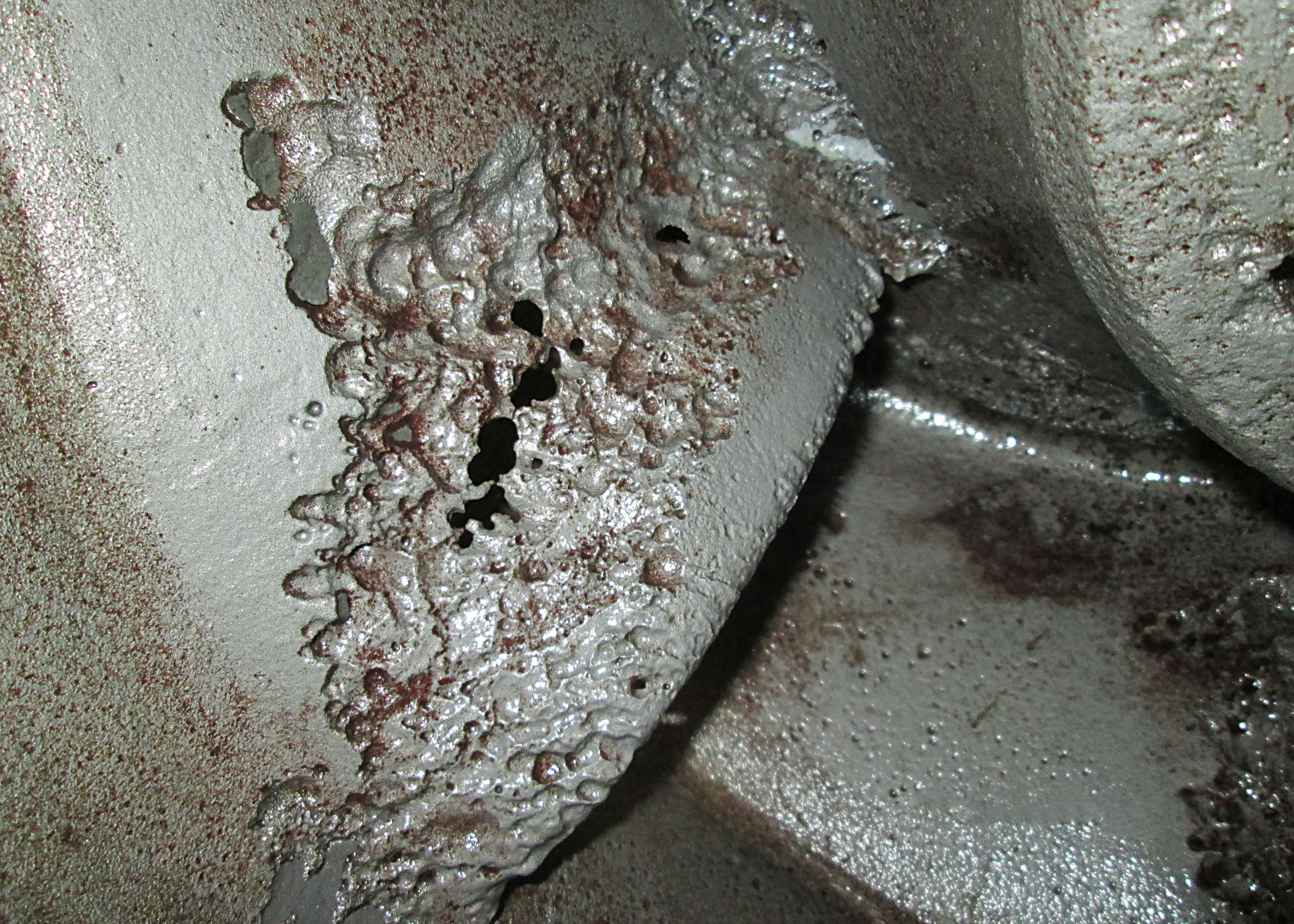
In this regard, the design of the suction element is important because the friction loss reduces the inlet pressure of the pump. In contrast, the losses due to friction in the draft tube raise the pressure on the turbine. Therefore, turbines are less susceptible to this phenomenon.
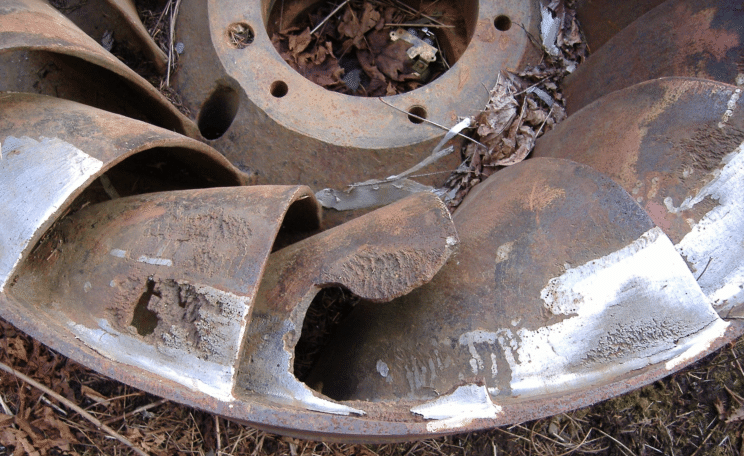
Differences in Mechanical Operation
The rotational direction of the pump and turbine is opposite in order to apply their functions. The direction of rotation of the pumps is called backward and turbines are forwards.
During the pumping, water flows from a lower pressure side to a higher pressure side. While in the turbine, the opposite path is taken for the fluid on the blade.
Differences in Hydraulic Head
Another example of the difference between pump and turbine is the effect of water flow on the machine hydraulic pressure head.
Pump
In a pump, the dynamic head rate that must be generated by the pump increases as the flow rate increases.
Turbine
In turbines, the available head decreases with increasing flow volume.
Differences in Classification
The classification difference between pump and turbine is based on the most common methods of determination of the types of these two machines. In both cases, the effect of the machine on the fluid is introduced as a criterion for defining their type.
Pump
Pumps are classified based on what components the pump is made of, or in what process it increases fluid pressure, or even what fluid it transmits. However, the most comprehensive and common classification of pumps is based on the mechanism of power transfer from the motor to the fluid.
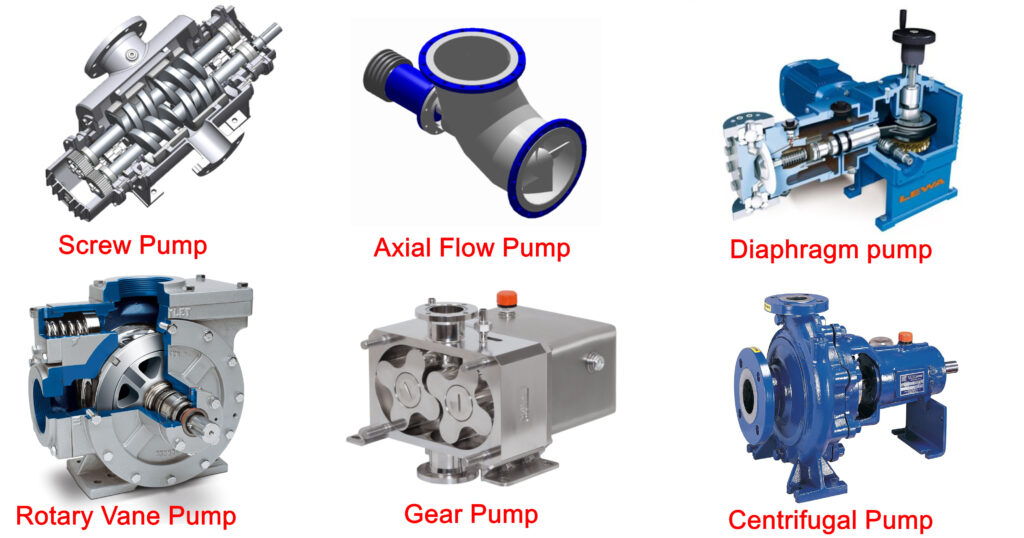
Based on this, there are two general types of displacement pumps and dynamic pumps, which are explained below.
Displacement Pumps
In these pumps, the transfer of power from the pump to the liquid is discontinuous. Moving the pump components increases the pressure of the liquid and the sucked liquid is sent to a point with a higher energy level and pressure.
There are two types of displacement pumps; one is the reciprocating pump and the other is the rotary pump.
In the reciprocating type, the rotational motion of the crankshaft causes the rod connected to it to move in the same direction, followed by the movement of the piston. As the piston moves inward, the fluid pressure increases. Therefore, the liquid can be discharged with more pressure in the intended direction.
Rotary pumps include cylinders, vanes, and rotors that move the vanes toward the wall by creating a centrifugal force. As a result, a chamber is formed between the rotor and the cylinder, which is the position of the liquid entering the chamber.
Dynamic Pumps
In these pumps, unlike the previous category, there is a constant interaction between the pump and the fluid, and the power is constantly transferred from the pump to the liquid. Two types of dynamic pumps are peripheral pumps and turbo pumps.
Turbine-like impellers in the peripheral turbines are responsible for increasing the velocity of the liquid. So, the specific structure of the turbine converts the velocity to pressure.
Generally, when it comes to pumps, turbo pumps are meant. Because they are used more in industries and more widely used than other types of pumps. These pumps increase the angular momentum and the energy of the fluid by constantly rotating the blades on the shaft connected to the motor.
Centrifugal, axial, and mixed pumps with horizontal or vertical installation in multi-stage or single-stage positions form different types of turbopumps.
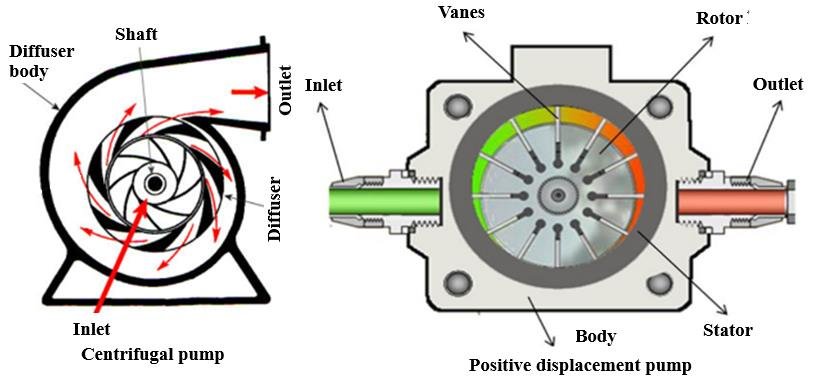
Turbine
In general, in a comprehensive classification, turbines are divided into two categories: reaction and impulse.
Impulse Turbine
In impulse turbines, the amount of fluid pressure drop across the turbine rotor is zero. However, the total fluid pressure drop occurs through the turbine assembly at the nozzle (s). Pelton, Turgo, and Cross-flow turbine are impulse turbines.
In these turbines, the entire hydraulic head in the nozzle is converted to high speed. In the process of fluid contact with the blades of these turbines, which are in the form of buckets, pressure and speed changes are negligible, but the direction of velocity changes. The turbine enclosure is not submerged in water.
What creates torque in these turbines is the collision of the fluid jet with the buckets and the rotation of the buckets and runner assembly around the axis.
Reaction Turbine
Unlike impulse turbines, fluid fills the reaction turbine passages; the pressure and velocity of the fluid passing through the rotor drops and the rotor extract energy from the fluid. The guide vanes act as nozzles to increase the flow speed. So, part of the pressure drop occurs in the guide vanes. The guide vanes also help the fluid reach the rotor in the right direction.
Francis, Kaplan, and Deriaz are three examples of reaction turbines.
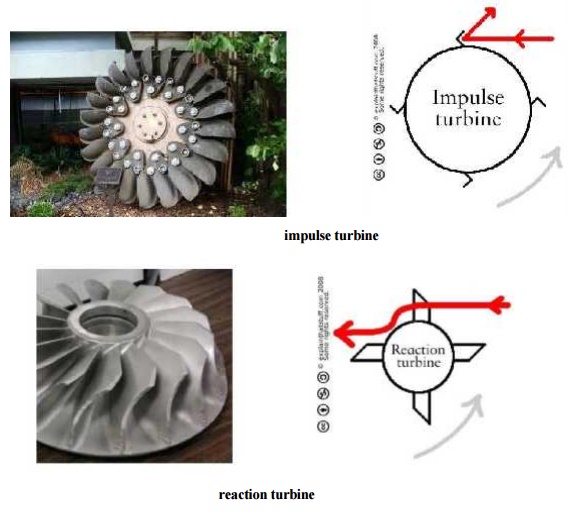
In addition to the above, there is a common type of classification of hydraulic turbomachines, which is based on the direction of the flow that enters the machine. Accordingly, machines are either centrifugal (radial), or axial, or complex flow.
In the case of pumps, which of these three types of pumps to use depends on the flow conditions. That is, centrifugal pumps, where the flow angle at the inlet and outlet are perpendicular, are used for large heads. Axial pumps in which the inlet and outlet flows are aligned are used for low heads. Mixed pumps, which differ from the inlet flow by more than 90 degrees in the outlet angle, have been developed for medium heads between axial pumps and centrifugal pumps.
However, the type of flow in turbines depends more on the turbine structure than on the flow conditions. For example, in the Kaplan turbine, which is an extended version of the Francis turbine, the wheel is axial, but the Francis turbine is a radial turbine and in modern types, it is a mixed flow turbine.
Download Difference Between Pump and Turbine PDF
Read More In Linquip
- What is Head of a Pump
- Pump Curve: All You Should Know About Definition and Read One
- Types of Turbines: Classifications and Types
- Different Types of Hydraulic Pumps: a Complete Guide
- How Does a Hydraulic Pump Work
- Axial Flow Turbines and Working Principles
- What is Turgo Turbine and How does it Work?
- The 8 Best Home Wind Turbines in 2021
- How Does a Steam Turbine Work
- The Practical Guide To The Difference Between Gas Turbine and Steam Turbines
- Beginner’s Guide: The Difference Between Gas Turbine and Gas Engine
- Mixed Flow Turbine
- Hydrogen Gas Turbine: All You Need to Know
- What is a Kaplan Turbine? Parts, Types and Working Principles
- Impulse Turbine: Working Principle, Components, and Types
- The Ultimate Guide to The Difference Between Gas Turbine and Reciprocating Engine
- What is Tesla Turbine and How Does it Works?
- What Are Air Source Heat Pumps
- Low Head Turbines
- Types of Centrifugal Pumps: All Classification & Working Principles
- Types of Submersible Pumps: All Classification With Details
- Different Types of Hydraulic Pumps: a Complete Guide
- Different Types of Pumps: Ultimate Guide in 2021
- Difference Between Pump and Motor
- Difference Between Pump and Compressor
- Difference Between Air Compressor and Air Pump
- Optimize Your Pump System with Linquip’s Pump Flow Rate Calculator




